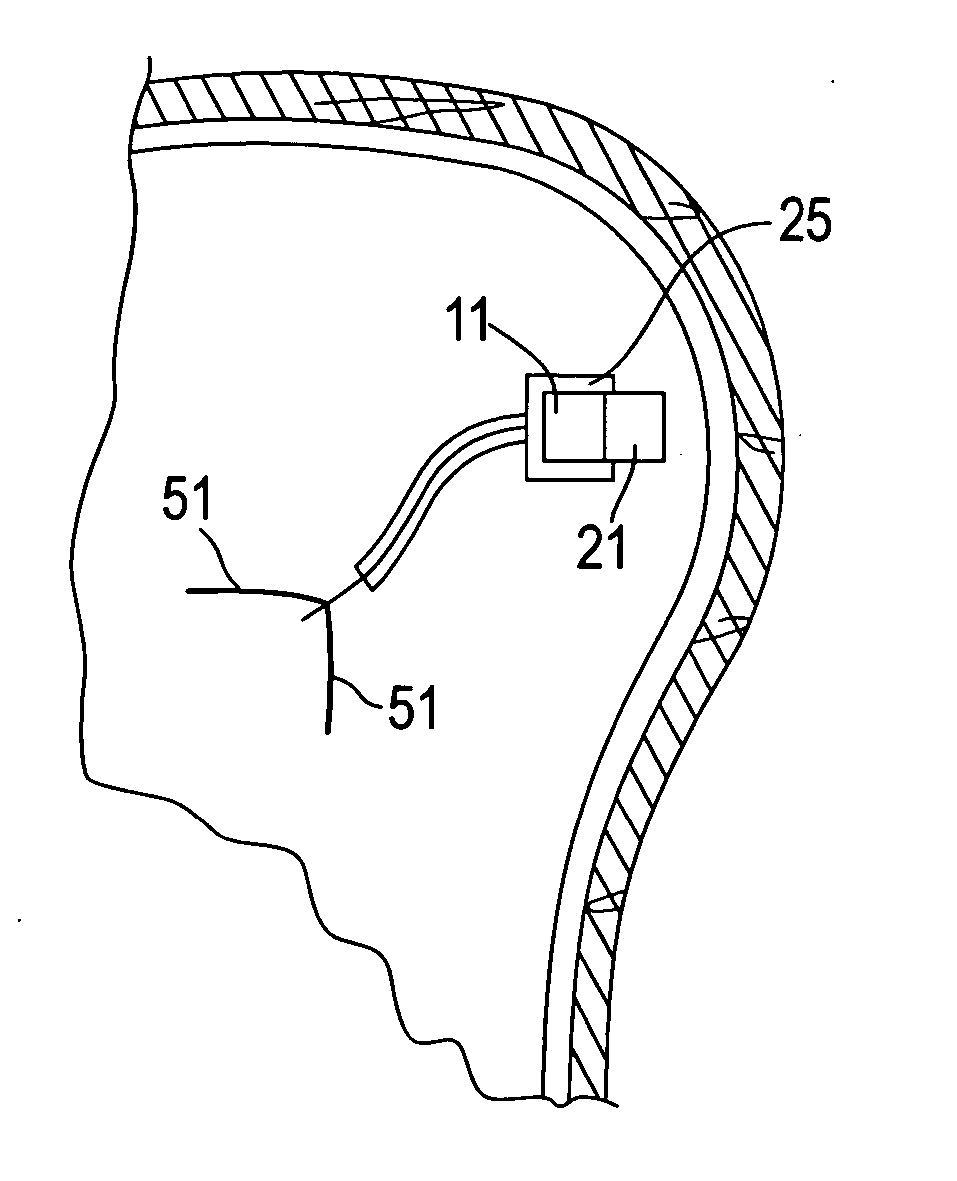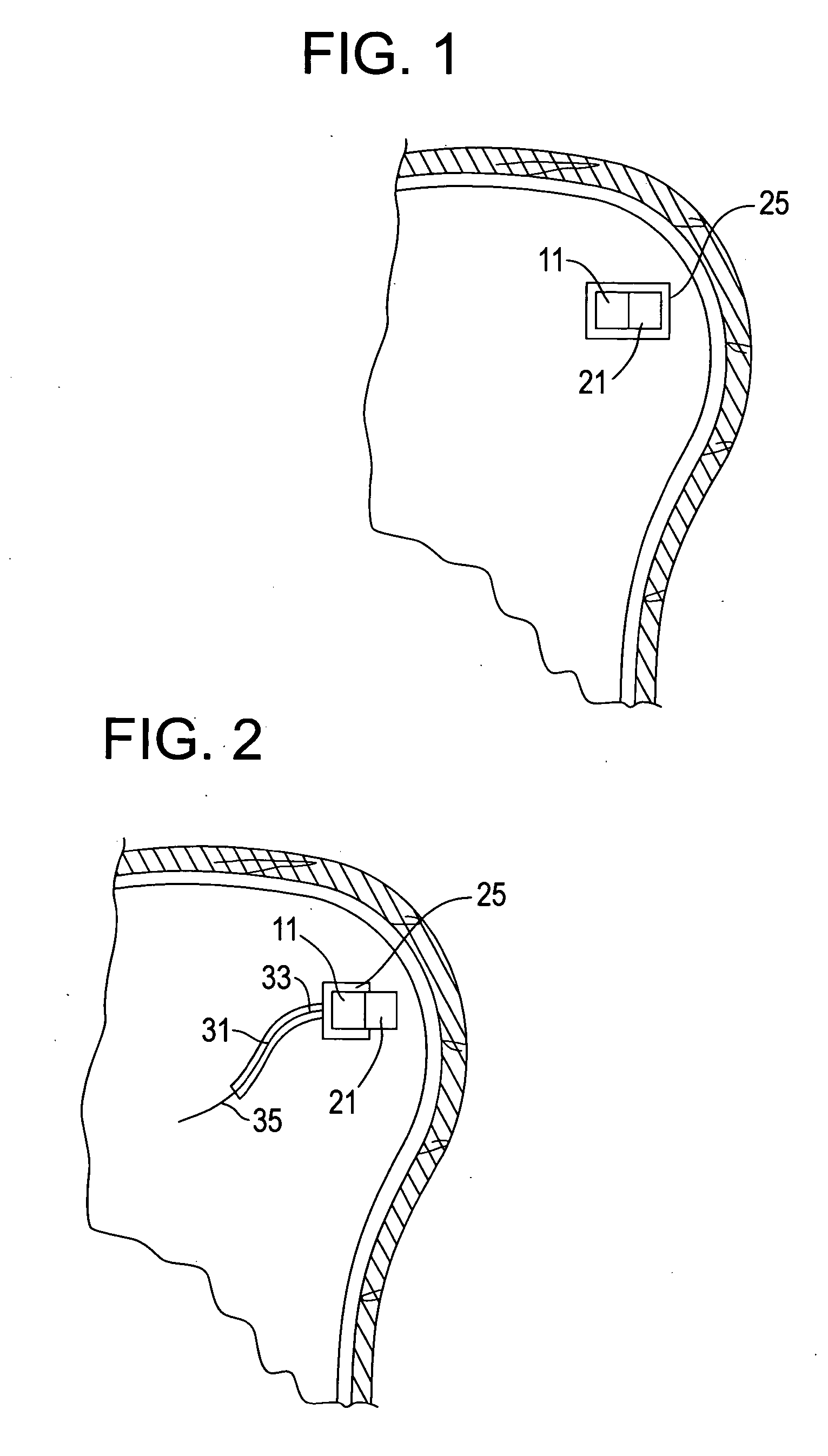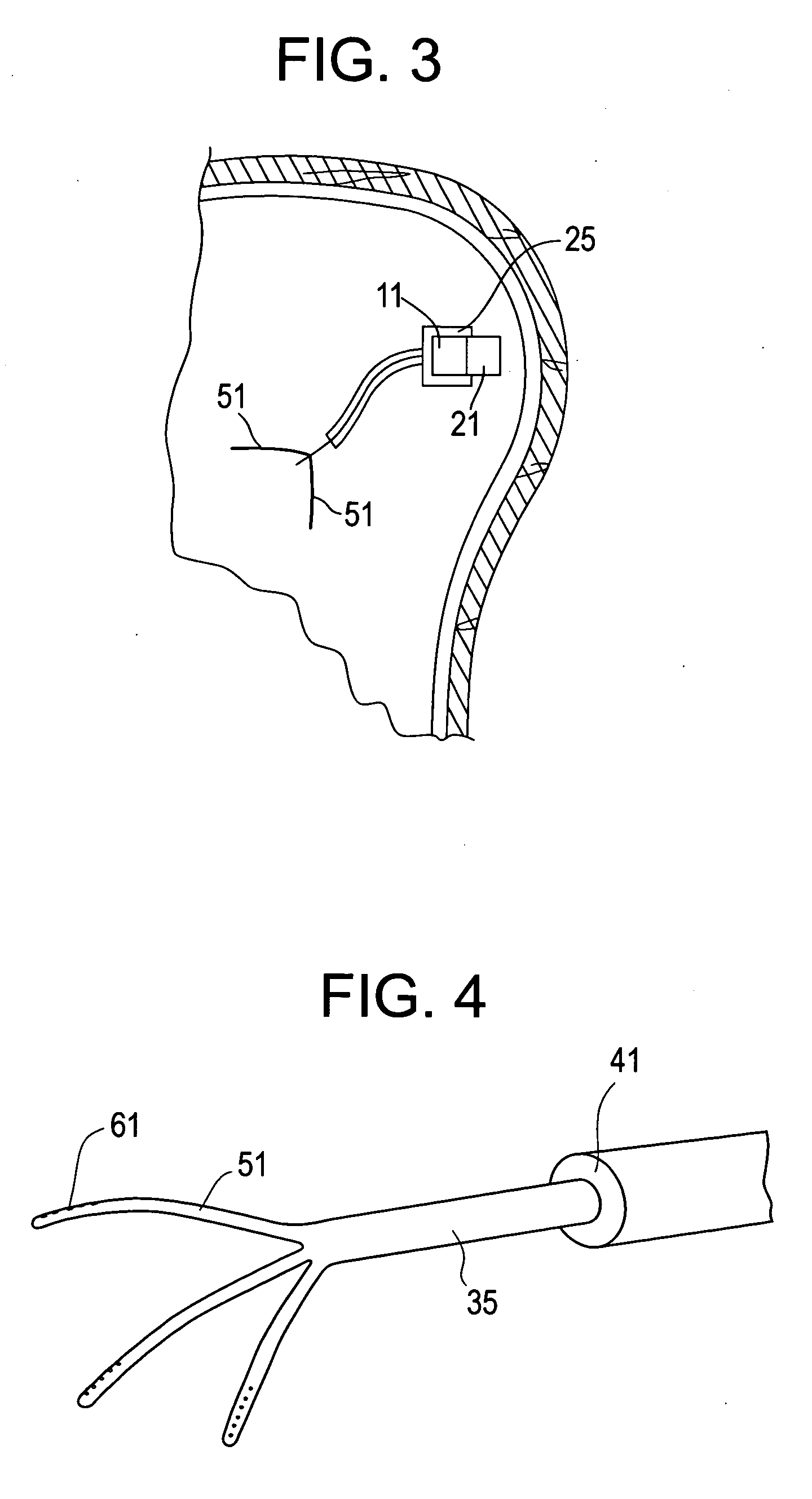Light-based implants for treating Alzheimer's disease
- Summary
- Abstract
- Description
- Claims
- Application Information
AI Technical Summary
Benefits of technology
Problems solved by technology
Method used
Image
Examples
Embodiment Construction
[0035] Now referring to FIG. 1, there is provided an implant for treating Alzheimer's disease comprising:
[0036] a) a UV-B Light emitting diode (LED) 11, and
[0037] b) an antenna 21 in electrical connection with the LED.
[0038] In use, the surgeon implants the device into the brain of the patient so that the device is adjacent to a portion of the brain which is inflamed. The IL-10 produced by the implant will then affect the area of inflammation. However, investigators have noted systemic immunosuprresive effects in animals subject to whole body UV irradiation, and have hypothesized that the mobility of the irradiated macrophages allows them to migrate to vast regions of tissue. See Kang, J. Immunol., 1994, 153, 5256. Accordingly, it is possible that irradiated cells (such as microglia and macrophages) in one portion of the brain may be sufficient to arrest inflammation over a much larger region of the brain. Therefore, it is possible that the implant need not be immediately adjacen...
PUM
 Login to View More
Login to View More Abstract
Description
Claims
Application Information
 Login to View More
Login to View More - R&D
- Intellectual Property
- Life Sciences
- Materials
- Tech Scout
- Unparalleled Data Quality
- Higher Quality Content
- 60% Fewer Hallucinations
Browse by: Latest US Patents, China's latest patents, Technical Efficacy Thesaurus, Application Domain, Technology Topic, Popular Technical Reports.
© 2025 PatSnap. All rights reserved.Legal|Privacy policy|Modern Slavery Act Transparency Statement|Sitemap|About US| Contact US: help@patsnap.com



